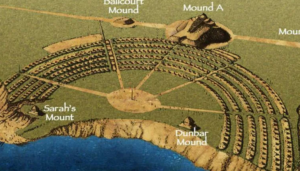In Louisiana sits one the United States oldest indigenous cultural and historical sites, but years on from its discovery scientists still debate what it was used for.
Located in West Carroll Parish in northeastern Louisiana, sits a prehistoric earthwork known as Poverty Point. The earthworks of Poverty Point consist of six C-shaped ridges that extend to the edge of the Macon Ridge and several mounds outside and inside the C-shaped ridges. This style of earthwork has yet to be found anywhere else and is unique to Poverty Point.
Archeologist have determined through radio carbon dating that construction of the site began as far back as 1700 BCE and continued to about 1100 BCE. For perspective, around this same time the last woolly mammoth died and the species became extinct, the Bronze Age started in China and Egypt began using yeast in bread. The site was built by the Poverty Point culture, a group of prehistoric indigenous people who inhabited the lower Mississippi Valley and Gulf coast.

Hotel Grande Bretagne: Stories of urban glamour (photos)
The people of Poverty Point were hunter-fisher-gathers rather than agriculturalist. They are one of the few examples of complex hunter-gatherer societies that constructed large-scale monuments. The vast majority of prehistoric sites, like Stonehenge and the Pyramids of Egypt, were constructed by agricultural societies. Because of this, archeologist struggle to determine what the function of Poverty Point could have been used for.
Continue here: yahoo
Ask me anything
Explore related questions





